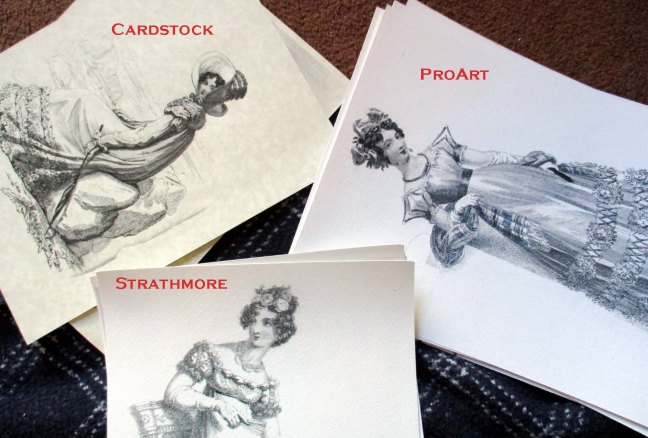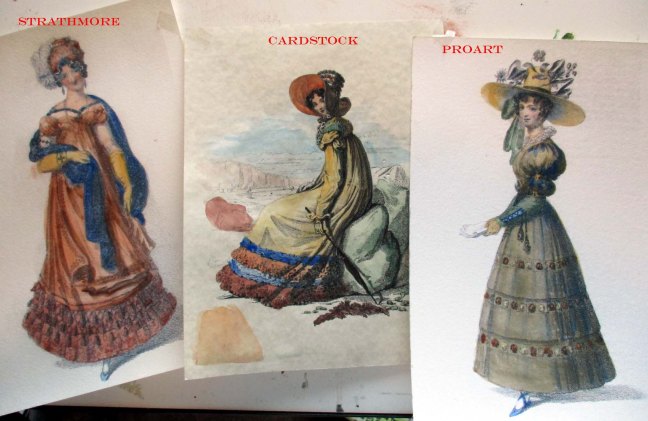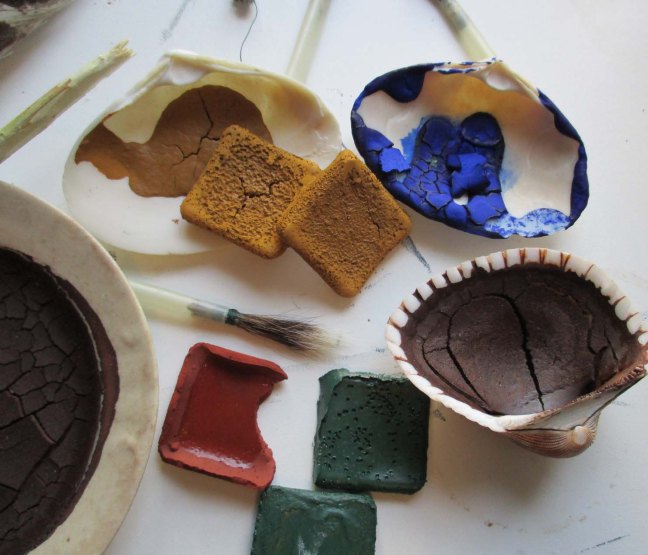
Comparison:
Cream-colored cardstock of some sort
ProArt 140lb cold press watercolor paper
Strathmore 140lb cold press watercolor paper
3 different brushes- squirrel fur with turkey ferrule.
I think I printed the cardstock on the office printer- it worked but wasn’t especially happy about it. I painted with a squirrel brush that I’d trimmed the tip off of, so it covered more ground but was rather stubby and didn’t do corners well. The watercolors appear brighter on this paper. It didn’t wrinkle as badly as I’d expected. The toner repels water, though, so where the ink is thicker I had to smooth in beads of water with a finger. Since it is not meant for watercolor, it might be harder to remove unwanted color and the surface of the paper might not withstand scrubbing or repeated washes.

The ProArt paper had the same problem with the watercolor being repelled by the toner. I used a long squirrel brush for this one that was a little difficult to control. The paper is not just thick, but stiff; it didn’t wrinkle at all. It doesn’t absorb color quickly so it is easy to pick up unwanted color with a brush.
The Strathmore paper is not as bright a white as ProArt, which is fine with me. The employee printed it in color for some reason, a dark blue-black. It didn’t repel the water, but tended to dissolve, unfortunately. See her elbow. So long as I specify black, it shouldn’t be a problem in the future. The Strathmore paper feels thinner than the ProArt even though they are the same weight, probably because it doesn’t have that starched feel. The third brush didn’t give me any trouble, or perhaps I was getting used to them.
The greens had trouble wetting, but didn’t want to rub out, either. I also need to add a pink and/or a crimson to my colors. It’s hard to put roses in the cheeks and I can’t mix a good skin tone with just yellow and red ochre and white.
The technique with early watercolor was to lay in shadows with ink washes and tint the picture with light color washes. Since the toner is repelling water I’m going to have to give this more thought too. If I remove all the greys and hatching from the fashion plates, the added colors will look far too modern.
 I’ve been researching this topic in earnest since September of 2015. Make some paints, I thought. Give period painting lessons. It’ll be fun.
I’ve been researching this topic in earnest since September of 2015. Make some paints, I thought. Give period painting lessons. It’ll be fun.
